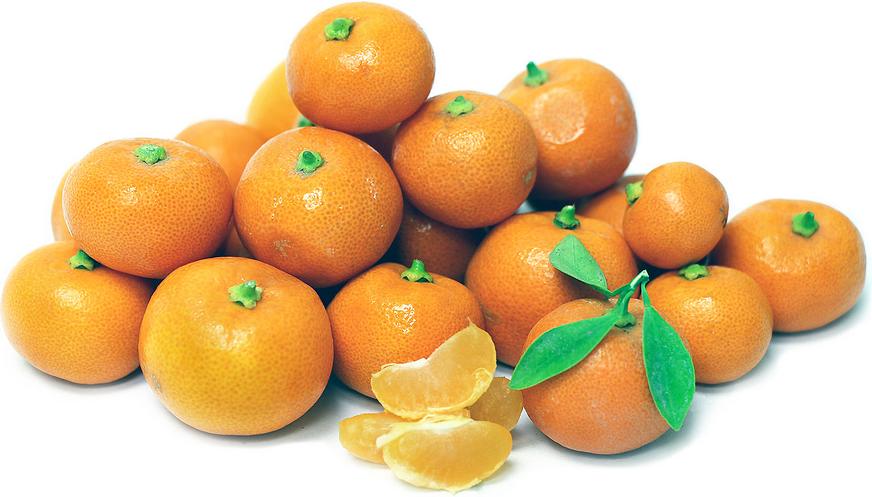


Calamondin Oranges
Estimated Inventory, lb : 0
Description/Taste
The small Calamondin orange has a bright orange skin with a small green notch at the top, a remnant of the harvest. First cultivated in China, the Calamondin orange is a little larger than a quarter and typically does not exceed one inch in diameter. The rind is thin, easy to peel and reveals an extremely juicy flesh. Calamondin oranges have a lot of flavor for its small size, offering an especially sour tangy flavor.
Seasons/Availability
Calamondin oranges are available year-round, due to its hardiness and tolerance to low temperatures.
Current Facts
The small Calamondin orange was introduced to the US at the turn of the 20th century as an “acid orange”. This tart orange takes the better part of a year to ripen, and should be harvested when it’s just starting to change color, or when it’s half-ripe. Calamondin oranges are a dwarf citrus variety and are often grown in pots as an ornamental tree. Botanically, Calamondin oranges are known as Citrus mitis, though they have also been classified as Citrus madurensis.
Applications
The tart and sour juice of the Calamondin orange is used much like the juice of a lime. Use Calamondin juice to make beverages (like calamondinaid), marinades for fish and meat, and to flavor cakes. Mix equal parts Calamondin and Kumquat to make an exceptional marmalade. Combine sliced Calamondin and cranberry to make chutney for holiday meals. In Malaysia, whole Calamondin fruit are fried in coconut oil and used in curries. The small oranges Calamondin oranges are best used within a week, unless refrigerated.
Ethnic/Cultural Info
Calamondin oranges are used for various medicinal purposes in Indonesia and Malaysia. The juice is rubbed on insect bites and stings to relieve itching and irritation. In the Philippines, the juice is used to bleach stains from fabric. Calamondin juice is taken for coughs and as an anti-inflammatory remedy.
Geography/History
Calamondin oranges are native to China and are considered to be very hardy trees, withstanding temperatures down to 20 degrees Fahrenheit. Calamondin oranges came to Florida via Panama and were called “Panama oranges” for a time. Calamondin oranges are a hybrid of a Kumquat and a Mandarin and are widely grown and used in the Philippines and throughout Malaysia where they are often called Calamonding or Calamansi.
Recipe Ideas
Recipes that include Calamondin Oranges. One




